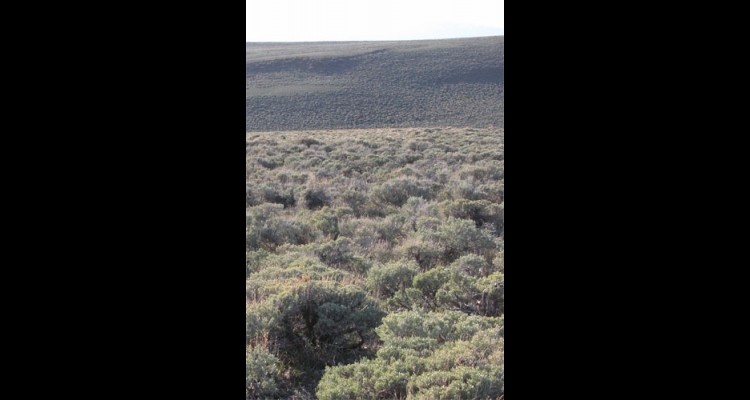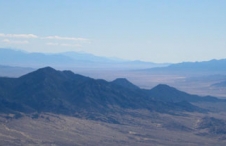Big Sagebrush
Big sagebrush is the state flower of Nevada and the characteristic shrub of the Great Basin's intermountain valleys and low mountain ranges. It has a wide distribution and occurs in a variety of habitats, and its characteristic aroma has become emblematic of the American West. Big sagebrush can exhibit a variety of growth forms, at least four of which are distinct ecotypes: basin big sagebrush (Artemisia tridentata subsp. tridentata), Wyoming big sagebrush (Artemisia tridentata subsp. wyomingensis), mountain big sagebrush (Artemisia tridentata subsp. vaseyana), and subalpine big sagebrush (Artemisia tridentata subsp. spiciformis). Basin big sagebrush is the tallest of these, frequently reaching heights in excess of six feet. This subspecies occurs in bottomlands and along watercourses, and it has been greatly reduced in distribution by agricultural and urban development of such areas. Wyoming big sagebrush is intermediate in height and grows on drier sites at lower elevations. Mountain big sagebrush–the common sagebrush of mountain slopes and uplands–is generally shorter in stature and is distinguishable by its seed heads, which are of relatively uniform height.
Although sagebrush communities may occupy as much as forty-five percent of the Great Basin, sagebrush species are not true desert shrubs. Sagebrush dominates steppe environments with a mean annual rainfall of eight to twenty inches. It prefers deep, well-drained soils, where its combination of deep taproots and lateral spreading roots allows it to take advantage of light rainfall while remaining resilient to prolonged droughts–common events in Nevada.
Big sagebrush was considered an important medicinal plant by native peoples, and teas made from the leaves were used to cure a great variety of ailments from stomach disorders to eye soreness. The boughs were burned for ceremonial rituals and air purification. The bark was used to make rope and garments such as sandals, and the wood was a common fuel for cooking and roasting nuts of pinyon pine.
Big sagebrush is eaten by deer and pronghorn, but it is avoided by horses and cattle due to chemicals called terpenoids stored in the foliage. These are volatile oils that function as chemical defenses against herbivory. Therefore, early Euro-American settlers and ranchers in the region routinely eradicated sagebrush and replaced it with pasture grasses, such as crested wheatgrass (Agropyron spicatum). Elsewhere, heavy grazing over extensive areas favored the less palatable sagebrush over other species, resulting in homogeneous stands of dense sagebrush where there formerly had been diverse mixtures of shrubs, grasses, and herbaceous flowering plants.
Today, the importance of big sagebrush community types for wildlife habitat is well recognized. Efforts to conserve the many species that rely upon diverse sagebrush communities for their habitat and foraging needs, including the Greater Sage-Grouse and pygmy rabbit, have sparked great interest and activity toward restoring and preserving this valued vegetation type.
Article Locations
Related Articles
Further Reading
None at this time.



